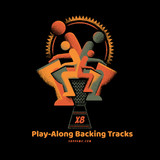How About a Drum Circle?
From the inspiration of drumming greats to the opportunity to be a part of a unique community of individuals, drum circles are a fun way to engage with others and develop a vast range of skills and abilities that are wholly beneficial to the body and mind. Drum circles are popping up in a variety of places including hospitals, schools and in workplace events, as well as in parks, during celebrations and festivals and in homes across the country. These events not only encourage togetherness and creativity, but allow for healing and wellness benefits. It’s no wonder drumming and drum circles continue to grow in popularity for people from all walks of life!
The diversity promised in a drum circle can start with the types of instruments used. Bongo drums and Djembes start off the overall tone of the music, while shakers, rattles and maracas bring a raspy harmony to the rhythm. Kalimbas and Udu drums add a melodious tone to the music, and the deep bass from a favorite Cajon drum ties the entire sound together. These instruments are only the beginning, however, as each drummer can be considered just as unique as the instrument played.
Some drummers are professionals, while others are just picking up a beat for the first time. Drumming is the perfect activity for people with physical disabilities, when the shake of a tambourine, tap of the foot or clap of the hands can add its own flavor to the mix without taxing the body. People with social anxiety, depression, autism or other atypical neurological functioning can benefit from a drum circle, through the therapeutic sound itself or the actual playing of the instruments. Age is not a factor in drumming, either, and watching a young child beat on a drum next to a senior with the claves can be a richly rewarding experience to behold.
As music can often be defined as an experience in itself, the sharing of this experience can forge strong ties between people. Drumming has been shown to increase the awareness of others and encourage teamwork within businesses and organizations, and can bring people together in a way other group activities cannot. Drum circles give people the ability to share a part of themselves in a non-judgmental environment, helping to increase self-esteem and the feeling of belonging.
When planning an event, how about adding a drum circle to the agenda? The creativity and joy that can be had through drumming together can be a memorable experience for all participants, and for the audience. Drumming and drum circles keep the natural rhythms of life moving strongly forward, strengthening bonds between people and encouraging physical and mental growth.
Recent Posts
-
X8 Drums Play-Along Backing Tracks
The new X8 Play-Along Series is being produced for our musician friends wanting a fresh way to work …9th Feb 2025 -
What is the Best Size Djembe for Beginners?
If you're new to the world of percussion and interested in learning the djembe, you're in for a t …16th Jul 2024 -
The Benefits of Becoming a Drumming Teacher: Transforming Passion into Profession
Why become a drumming teacher? Becoming a drumming teacher is an excellent way to share your pas …22nd May 2024



